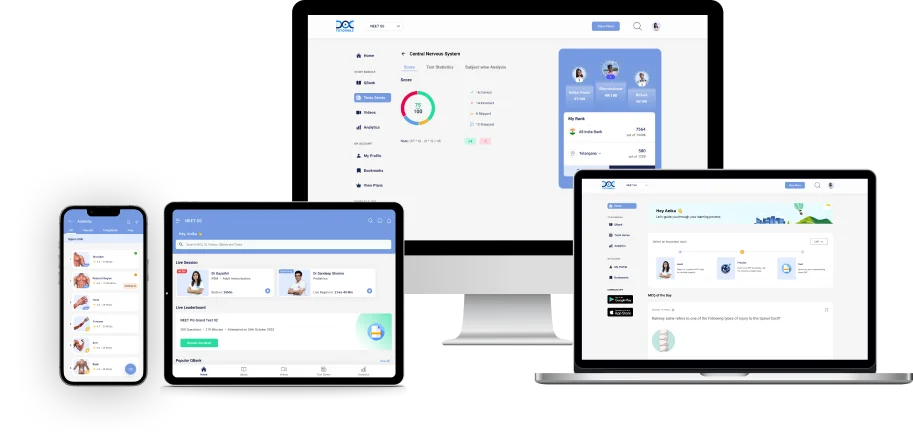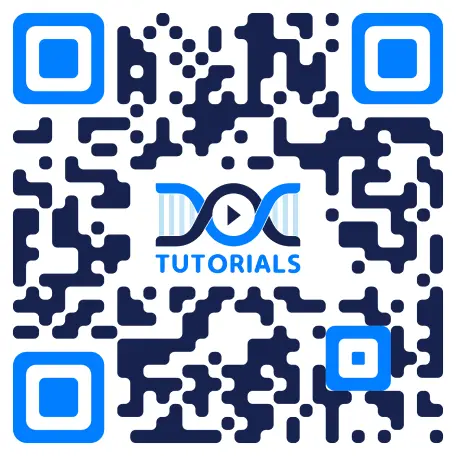MBBS 1st-year Toughest Subject: Master Strategies to Tackle Anatomy
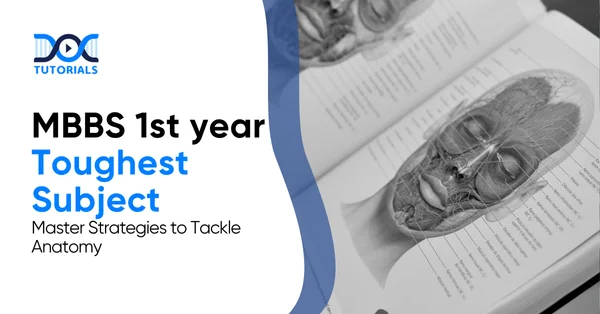
Anatomy is regarded as the most difficult subject among first-year medical, dental, physiotherapy, and nursing students. It is the pillar of medical education, yet the number of terms, the complexity of relationships between structures, and the time spent in the dissection hall may overwhelm it.
By adopting a focused approach, having appropriate resources, and active learning strategies, the students are capable of transforming what might seem to be an intimidating subject into an interesting field. A mastery of anatomy will not only provide confidence but also provide the foundation for all future clinical learning.
In this article, you will learn how to study wiser, how to make the most of dissection, and how to store in memory that which is not only exam-wise significant but also significant in the actual clinical reasoning. Keep reading for a detailed insight.
What are the Smart Strategies to Tackle Anatomy?
Here are some of the most effective strategies that can help medical students handle the Anatomy subject in an enhanced manner:
1. Treat Anatomy as a Language
Anatomy isn’t a straightforward subject—it’s vast, interconnected, and sometimes messy. You’ll move between textbooks, atlases, 3D apps, and cadaver labs before things start to make sense, and that’s perfectly normal. This back-and-forth isn’t a lack of focus; it’s how anatomy learning naturally works.
Ask yourself:
- Why is this structure shaped this way?
- How does it relate to nearby structures?
- What happens if it’s injured?
Over time, this habit builds the foundation for clinical reasoning. You’ll start seeing how structure connects to function and how anatomy translates into real-life diagnosis and treatment—skills that are invaluable for both patient care and clinical expertise.
2. See the Big Picture First
It is important to first know how the organ systems are arranged and where they are located in the body. Visualise the connections between and functions of individual structures using labelled diagrams and interactive 3D models. This is a much more intuitive approach to detailed study than looking at individual structures in isolation.
3. Choose a High-Quality Toolkit
There are millions of anatomy books, apps and websites out there, so it is easy to get lost. The excessiveness of resources may lose precious time and cause confusion. Rather, create a small, trustworthy toolkit uniting three key components – text, visuals, and active recall.
A. Use Core Textbooks and Atlases
- Grey’s Anatomy for Students: Comprehensive and clinically focused
- B.D. Chaurasia’s Human Anatomy: Widely used for its clarity and exam relevance
- Netter’s Atlas of Human Anatomy: The gold standard for anatomical illustrations
B. Incorporate 3D and Video-Based Learning
- At DocTutorials, you get access to 3D video-based lectures with animations that can assist in visualising depth and orientation, and therefore, it is possible to relate the knowledge in the textbooks to real-life anatomy.
C. Use a Balanced Mix
Variety enhances understanding, but selectivity matters. Choose resources that complement one another rather than overlap, such as:
- Textbooks → for depth, terminology, and accuracy.
- Flashcards → for active recall and speed.
- 3D or Video Platforms → for spatial awareness and clinical relevance.
- Quizzes and Practice Tests → for reinforcement and confidence building.
4. Learn the Language Before the Details
Before diving into muscles and nerves, spend a few hours mastering the language of anatomy, such as:
- Directional Terms: anterior/posterior, medial/lateral.
- Planes: sagittal, coronal, transverse.
- Surface Landmarks: clavicle, sternum, iliac crest.
- Common Roots: “brachi-” (arm), “cephal-” (head), “cardio-” (heart).
5. Step Into Cadaveric Dissection
The cadaver lab is where anatomy comes alive. Make the most of your time in the lab in the following ways:
- Before Lab: Spend 30–60 minutes previewing the region in your atlas or watching a short dissection video.
- During the Lab: Be active. Trace structures with your fingers, identify landmarks aloud, and quiz your peers.
- After Lab: Review within 24 hours — annotate notes, draw diagrams, or create flashcards.
Study more than one body. Exposure to real human variation trains your eyes to notice subtle differences. It is a crucial skill for any future surgeon or diagnostician.
6. Active Learning Methods that Actually Work
Anatomy rewards doing, not just reading. Here’s how to make your study sessions active and memorable:
A. Spaced Repetition
Review flashcards at increasing intervals using Anki or similar tools. Simple question–answer cards (e.g., “What are the branches of the external carotid artery?”) train long-term memory efficiently.
B. Interleaving and Retrieval Practice
Alternate between related topics — for instance, study shoulder muscles, then their nerve supply, then clinical tests. Testing yourself builds durable recall.
C. Draw to Learn
Sketching doesn’t require artistic talent. When you draw a structure from memory, you’re forcing your brain to reconstruct it — this is called dual coding, and it dramatically boosts retention.
D. Use the Feynman Technique
If you really want to master a concept, teach it. Explain a topic as if to a non-medical friend — clearly, simply, and without notes. If you struggle, you’ve found your weak spots. You can practice this with classmates or even in the cadaver lab after hours.
E. Connect Structure to Function
Every time you learn a new region, ask “why.” Why does the brachial plexus cause wrist drop if injured? Why does carpal tunnel syndrome affect specific fingers? Connecting structure with function makes recall automatic and clinically relevant.
7. Don’t Ignore Previous Year Questions (PYQs)
When it comes to exams, smart preparation beats exhaustive reading. Around 70% of university and NEET PG questions are repeats or slight variations of old ones. Go through past papers, identify high-yield topics (like histology, embryology, and limb anatomy), and study those deeply. Use PYQs to predict examiner patterns and focus your energy where it matters most.
8. Follow Through on Test Day
You’ve done the work — now perform effectively under pressure. Here’s how you can strategically prepare for the exam day:
A. Orient Before You Answer
In a practical exam, take a few seconds before answering to orient yourself. Is the body supine or prone? Are you looking at the anterior or posterior compartment? Quick orientation prevents silly mistakes that cost easy marks.
B. Read Carefully
Examiners often include tricky wording or eponyms. For example, Lister’s tubercle is the distal dorsal tubercle of the radius — simple if you spot the clue, confusing if you don’t.
Slow down enough to read each option carefully, especially in multiple-choice questions.
C. Manage Time
If you have one minute per station, spend 10 seconds orienting, 40 seconds recalling, and 10 seconds double-checking. A calm rhythm outperforms panic every time.
9. Connect Structure to Clinical Meaning
Anatomy takes on real significance when you link what you learn to clinical conditions. Understanding how variations in structure can lead to specific symptoms or diseases transforms memorisation into meaningful application. This is the bridge between the form and functional aspects that will assist you in thinking like a clinician rather than a student.
10. Reinforce Through Practice
Enhance your knowledge through practical, real-life experiences. Cadaveric dissection is an exclusive opportunity to learn the real tissues of the human body and enjoy anatomy in 3D.
Combine with clinical case studies to find the way anatomical variation and abnormality manifest in actual patients. It is difficult to bridge concepts when one learns isolated information.
What are the Common Pitfalls in Anatomy and How to Fix Them?
Here’s a concise summary of the most frequent mistakes students make while studying anatomy — and practical ways to avoid them. Keep this list handy as a checklist throughout your course:
1. Not Having a Plan
Diving into anatomy without a clear roadmap leads to confusion and missed topics.
- How to Fix: Design a weekly and daily schedule from the start. Break large topics into smaller goals, set review days, and stick to your timeline. Consistency is key to covering everything on time.
2. Not Staying Consistent
Even with a great plan, skipping study sessions breaks momentum.
- How to Fix: Build a steady daily routine with shorter, focused sessions rather than long cramming marathons. Treat anatomy like a skill — daily practice creates mastery.
3. Believing in Learning Myths
Speed reading, “learning styles,” or copying what others do are all traps that waste time.
- How to Fix: Use evidence-backed techniques like spaced repetition, self-testing, and active recall. These methods have been proven to improve retention and long-term understanding.
4. Studying in Order Instead of by Priority
Following the textbook’s sequence isn’t always the smartest way to learn.
- How to Fix: Focus on high-yield, exam-relevant topics first (e.g., major muscle groups, nerve pathways, and clinical correlations). Then, fill in the smaller details later.
5. Not Asking for Help
Struggling in silence slows progress and leads to gaps in understanding.
- How to Fix: Don’t hesitate to ask questions in class, during labs, or online. Discuss your doubts early — it’s a sign of strength, not weakness.
6. Not Visualising What You Learn
Anatomy is a visual and spatial subject; text-only learning won’t stick.
- How to Fix: Use 3D models, anatomical atlases, videos, and dissections to visualise relationships. Try drawing structures and labelling them from memory to strengthen recall.
7. Missing the Big Picture
Memorising isolated details without context makes it hard to connect concepts later.
- How to Fix: Begin each topic with an overview or summary map to understand the “why” behind the “what.” Build from the general framework to finer details — not the other way around.
8. Ignoring Clinical Relevance
Without connecting theory to practice, information fades quickly.
- How to Fix: Link every structure to its function and potential pathology. For example, understanding the course of a nerve helps explain real-world symptoms like paralysis or numbness.
9. Studying Passively
Simply rereading or highlighting doesn’t build lasting memory.
- How to Fix: Turn studying into an active process. Quiz yourself, teach a classmate, use flashcards, or explain topics aloud. Testing yourself is the most powerful way to learn.
10. Not Reflecting on Mistakes
Repeating errors without identifying the cause leads to frustration and burnout.
- How to Fix: Once you have successfully completed a test, lab or quiz, spend five minutes looking at what went wrong and why.
To identify the trends and make your study habits effective with time, maintain a short “mistake tracker” to identify patterns and improve your practice over time. Speed reading, or imitating others, are all pitfalls that will cost you time.
FAQs about Mastering the Toughest MBBS 1st-year Subject
1: What is the fastest way to memorise anatomy?
To memorise anatomy within a short period of time, visual learning is the best method to use. Simplified to enable students to learn structures and spatial relationships with the use of atlases, diagrams, 2D illustrations, 3D models, or videos, making the abstract information easier to remember.
2: How can anatomy be learned without forgetting?
Retention is enhanced by systematic methods: prepare a good base, cluster together pertinent structures, relate them to their functions, and employ active memory by the use of quizzes or flash cards. Long-term memory is further enhanced with group study and frequent revision with time spacing.
3: How many hours should be dedicated to studying anatomy?
Studying one to two hours daily with consistent, focused practice is ideal. Regular sessions are more effective than occasional long study marathons, ensuring steady learning and better retention.
Conclusion
Mastering anatomy isn’t about having a photographic memory — it’s about adopting the right strategies and cultivating curiosity. Ask questions, embrace the messiness, engage your hands, eyes, and mind together, teach others, and reflect on what you observe.
DocTutorials can become the perfect partner for your studies if you need more assistance with your 1st-year MBBS preparation. We offer 3D animated video lectures, an extensive question bank, previous year questions (PYQs), and live doubt-clearing sessions to enable you to study effectively, pass the exams, and enrich your knowledge in the clinical field.
Join DocTutorials today and explore our MBBS curriculum to excel in your medical career!
Latest Blogs
-
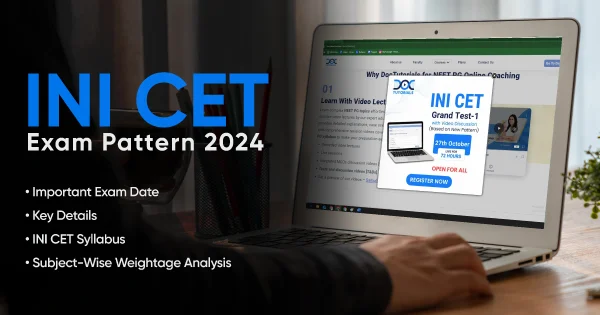
INI CET Exam Pattern 2025: A Complete Guide with Subject-Wise Weightage
The Institute of National Importance Combined Entrance Test (INI CET) is your key to entering some of the most prestigious…
-
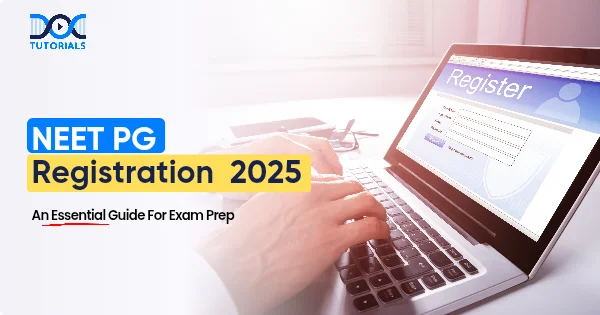
NEET PG Registration 2025: An Essential Guide For Exam Prep
The NEET PG registration, which is conducted online, is a crucial step in the exam process. Filling out the NEET…
-
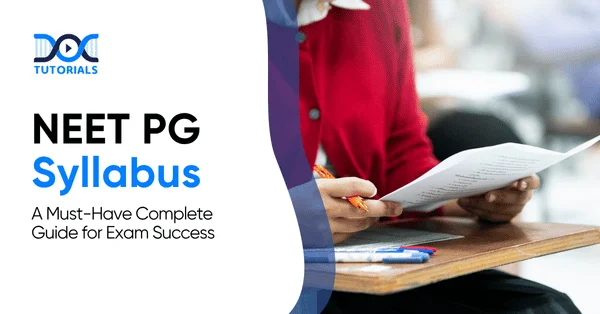
NEET PG Syllabus 2026: A Must-Have Complete Guide for Exam Success
The NEET PG Syllabus acts as one of the foundation stones for aspiring postgraduate medical students like you who are…

